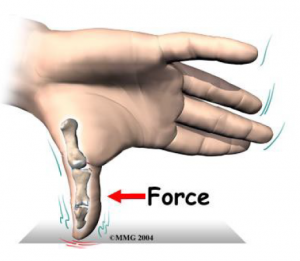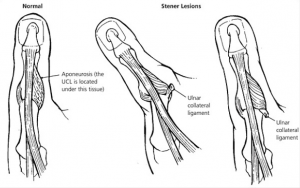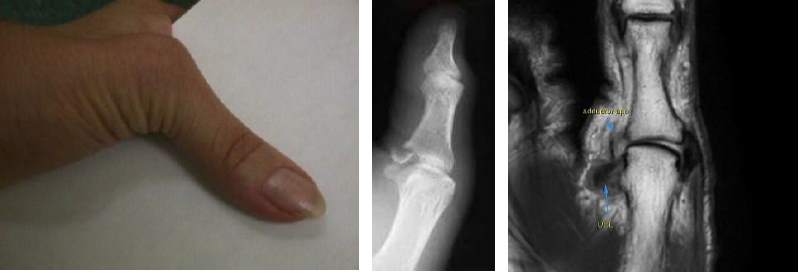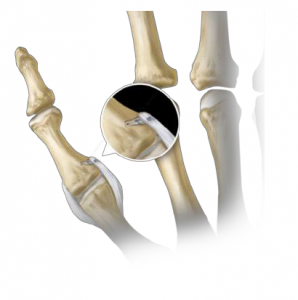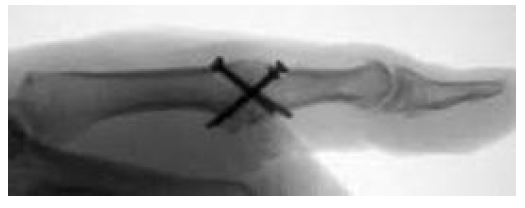Thumb Ulnar Collateral Ligament Injuries
What are the collateral ligaments of the thumb?
The thumb metacarpophalangeal joint has two important ligaments the ulnar collateral ligament (pinky side of the thumb) and the radial collateral ligament (the free side of the thumb). These collateral ligaments are essential for the stability of the thumb for pinch and activities of daily living.
What is the ulnar collateral ligament?
The UCL to the thumb is a complex: the UCL proper and accessory UCL. Together, they stabilize the thumb for pinch and grip. Without this ligament, one has very little pinch strength and poor dexterity.
How does one injure the UCL to the thumb?
This injury was originally called “game keepers thumb”. It should be called skiers thumb because that is one of the most common mechanisms of injury. Any blow to the inside of the thumb can cause the ligament to tear.
What is a Stener Lesion?
The ligament can often be displaced and caught between a muscle that moves the thumb and the bone. The importance of this is that there will be no chance for healing, even if caught acutely and cast.
How is a UCL injury diagnosed?
Early on it is often obvious because of swelling, pain, and instability at the joint. X-rays are needed to rule out a fracture. MRI is helpful to check for a Stener lesion and to look for other injuries.
How are UCL injuries treated?
Partial tears and minimally displaced tears can be treated in a cast. A cast is worn for 4 weeks followed by a removable splint until motion and stability are returned. Complete tears that are displaced are treated surgically.
What if the UCL injury is chronic?
Often patients will present with instability late after an injury. They can usually be treated by mobilizing the ligaments and doing a primary repair. Sometimes, a graft is used. All with good success.
What are the outcomes of surgical treatment of UCL injuries?
Most everyone can get back to the same level of function after surgery. This includes those that have been injured chronically.
What happens if a UCL does not heal properly?
The metacarpophalangeal joint will become arthritic due to prolonged instability. Once the joint is arthritic, the only treatment is an arthrodesis or fusion of the joint. An arthrodesis is well tolerated in this joint, but a reconstruction of the UCL is obviously better.


